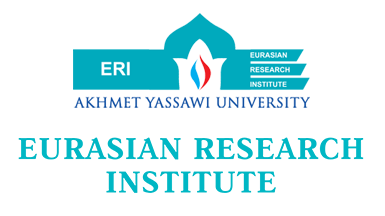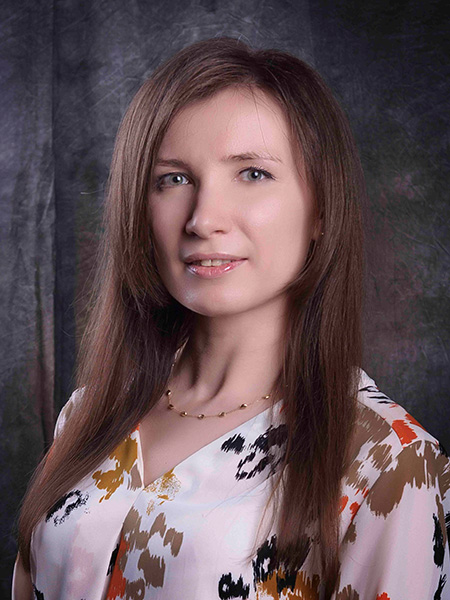Since the presidential elections have become an integral part of the Iranian political landscape there was no doubt that there will be a tight race between the candidates contending for the presidency. The very fact that the authorities chose live broadcasting of the presidential debates to mitigate resentment in the Iranian society is further indication of the polarization of political environment in the country on the eve of the forthcoming 12th presidential elections.
In fact, the candidates approved by the 12-member Guardian Council had 20 days until May 17 to campaign for the elections, which will be held on May 19, 2017. (TheRussophile, 2017) According to the Interior Ministry of Iran, the list of approved candidates announced on April 27, 2017, consists of three candidates who could be identified as the representatives of the reformist camp, namely, the current President, Hassan Rouhani, the current Vice President, Eshagh Jahangiri, and the former Vice President, Mostafa Hashemitaba, as well as three candidates from the principlist (or conservative) camp, namely, the Chairman of the Astan Quds Razavi,[1] Ebrahim Raisi, the current Mayor of Tehran, Mohammad-Bagher Qalibaf and the former Minister of Culture and Islamic Guidance, Mostafa Mirsalim. It should be mentioned that during the five-day registration process closed on April 15, 2017, 1,636 applicants were registered for the elections, which is 2.4 times higher than the number of applicants registered for the previous presidential elections in 2013 when the Guardian Council approved eight candidates out of 680 people who registered. (Grasswire, 2017) It took over 10 days for the Guardian Council to assess the qualifications of registered applicants and to disqualify the majority of them, including the former President, Mahmoud Ahmadinejad[2], the former Vice President, Hamid Baghaei, and the former Head of Broadcasting, Mohammad Hashemi Rafsanjani.
It was widely expected that the incumbent President of Iran, Hassan Rouhani, will run for the second presidential term. In fact, the 68-year-old President has good chances of being reelected not only because presidents of Iran have almost always been confirmed for a second term since the establishment of the Islamic Republic in 1979 but also because he still enjoys great support, especially among young educated and reforms-oriented Iranians who welcomed the rapprochement with the West. (Hein, 2017) Moreover, Hassan Rouhani is still strongly supported by moderates and reformists from a wide range of political bodies such as the Moderation and Development Party, the Reformists’ Supreme Council for Policymaking, the Council for Coordinating the Reforms Front, the Union of Islamic Iran People Party, the Will of the Iranian Nation Party, the Democracy Party and the Workers’ House, which are capable to mobilize their voters.
Moreover, the approval of the candidacy of incumbent Vice President of Iran, Eshagh Jahangiri, who is considered as one of closest associates of the President, allowed the pro-Rouhani reformist camp to correlate his election campaign with Hassan Rouhani’s campaign. In fact, experts perceive Eshagh Jahangiri as a cover candidate who will withdraw in favor of the incumbent President just as the campaigning window is closed. (Iranian Diplomacy, 2017) Therefore, Rouhani- Jahangiri political tandem will stand for the continuation of the economic openness policy defending the administration’s achievements. Moreover, despite the fact that the third candidate affiliated with the reformists, Mostafa Hashemitaba, has not yet made key points of his campaign clear, it could be predicted that he will not fall into confrontation with Hassan Rouhani’s policies.
The most serious challenger to the current President is the 57-year-old religious leader, Ebrahim Raisi, who is Ayatollah Ali Khamenei’s closest confidant. (Hein, 2017) In fact, Ebrahim Raisi topped the list of candidates for the presidency from the Popular Front of Islamic Revolution Forces (PFIRF) founded by the principlist parties in December 2016 for the purpose to confront Hassan Rouhani’s reelection. In his mission to prevent Hassan Rouhani remaining in power, Ebrahim Raisi will be accompanied with the former commander of the Islamic Revolutionary Guard Corps and Iran’s National Police, and the current Mayor of Tehran, Mohammad-Bagher Qalibaf.
Actually, the PFIRF had great expectations that the Guardian Council would approve the former member of the Parliament, Alireza Zakani, and the current member of the Parliament, Hamidreza Hajibabaei, who were also included in the final list of top four candidates approved during the second convention of the organization held on April 6, 2017. However, after the disqualification of Alireza Zakani and Hamidreza Hajibabaei, Ebrahim Raisi and Mohammad-Bagher Qalibaf became the main duet of candidates for presidency of the principlist camp. Despite the fact that the former Minister of Culture and Islamic Guidance of Iran, Mostafa Mirsalim, is backed by the conservative Islamic Coalition Party, which actually joined the PFIRF, this third candidate affiliated with the principlist camp prefer to position himself as an independent candidate. It is also worth mentioning that despite being considered as the PFIRF candidates Ebrahim Raisi and Mohammad-Bagher Qalibaf did not show their strong interest in the possibility of withdrawing in favor of another candidate, which actually was the key principle in the election strategy of the newly formed Front. This situation demonstrates a high level of uncertainty over the elections results even among the principlist camp.
It could be seen that the four candidates coming from the two camps, namely, Rouhani and Jahangiri on the one side, and Raisi and Qalibaf, on the other, will be the main figures in the presidential race. It could be expected that the Raisi-Qalibaf tandem will choose an aggressive campaign style, while the Rouhani-Jahangiri duet will pursue a defensive campaign against their opposition.
The principlist candidates will try to justify the need to remove Hassan Rouhani from power pointing to his economic policy failures. For instance, according to the International Monetary Fund’s annual report published in February 2017, the Iranian authorities were able to decrease inflation to 6.8% in June 2016 from a peak of 45% in June 2013. However, Iran’s inflation was increasing in the 9.5% range year-on-year since mid-2016. Moreover, despite the fact that the lifting of sanctions in January 2016 provided a short-term boost to the economy of Iran (for instance, real GDP grew by 7.4% in the first half of 2016), the Iranian economy still suffers from structural weaknesses, which could cause further decrease of real GDP growth to 3.3% in 2017. (Internation Monetary Fund, 2017) Moreover, according to the Statistical Center of Iran, the unemployment rate increased by 1.4% and reached 12.4% in 2016. As a result, about 3.2 million Iranians out of a total population of 80 million people are jobless. (Sharafedin, 2017) Therefore, despite some positive steps made by the Iranian Government in order to strengthen national economy, the results achieved do not meet people’s high expectations. Moreover, the Supreme Leader, Ayatollah Ali Khamenei, shares this sense of disappointment and is deeply alarmed by the economic development prospects of the country. Ayatollah Ali Khamenei’s latest criticism was considered by the principlist camp as a vital expression of his readiness to support Ebrahim Raisi. However, the Supreme Leader tries not to be involved in the pre-election campaign.
It could be also mentioned that on the eve of the presidential elections Iran’s law enforcement officials decided to strengthen the special police units responsible for the elections security tripling their number to 20,000 in order to prevent antigovernment riots in the country similar to protests in 2009. It is stated that security concerns over the current elections differ from those during the 2009 elections. Actually, there are concerns that a possible popular unrest could be provoked by an external enemy.
In conclusion, it could be stated that the principlist candidates would make every effort to block Rouhani’s reelection. In fact, on the eve of the elections, in order to allow the PFIRF to consolidate around a powerful conservative in the fight against the reformist-backed incumbent President, Mohammad-Bagher Qalibaf has dropped out of Iran’s presidential race appealing to his supporters across the country to come out in support of Ebrahim Raisi. However, it is not clear yet how strong the incumbent President’s domestic positions will be at the time of the actual vote.
References
Grasswire. (2017). A brief guide to Iran’s presidential election.
Retrieved from https://www.grasswire.com/2017/04/brief-guide-irans-presidential-election/
Hein, S. v. (2017). Iran: Who are the presidential candidates?
Retrieved from http://www.dw.com/en/iran-who-are-the-presidential-candidates/a-38547705
Internation Monetary Fund. (2017). Article IV consultation report- IMF Country Report No.17/62. Washington D.С.
Retrieved from http://www.imf.org/~/media/Files/Publications/CR/2017/cr1762.ashx
Iranian Diplomacy. (2017). How will Iran’s Six Presidential Candidates Campaign.
Retrieved from http://www.irdiplomacy.ir/en/page/1968584/How+will+Iran%E2%80%99s+Six+Pr…
Sharafedin, B. (2017). Iran’s Khamenei criticises government’s economic record.
Retrieved from http://uk.reuters.com/article/uk-iran-khamenei-new-year-idUKKBN16R12K
The Russophile. (2017). Iran’s 2017 presidential election in numbers.
Retrieved from https://www.therussophile.org/irans-2017-presidential-election-in-number…
[1] Astan Quds Razavi is charitable foundation entrusted with protecting the Imam Reza shrine, which receives massive financial donations. The Supreme Leader Ayatollah Ali Khamenei approved Ebrahim Raisi as a head of the Astan Quds Razavi in 2016.
[2] Ayatollah Ali Khamenei advised Mahmoud Ahmadinejad not to run, and his attempt to become a candidate was widely seen as a public lack of respect to the Supreme Leader.
41


